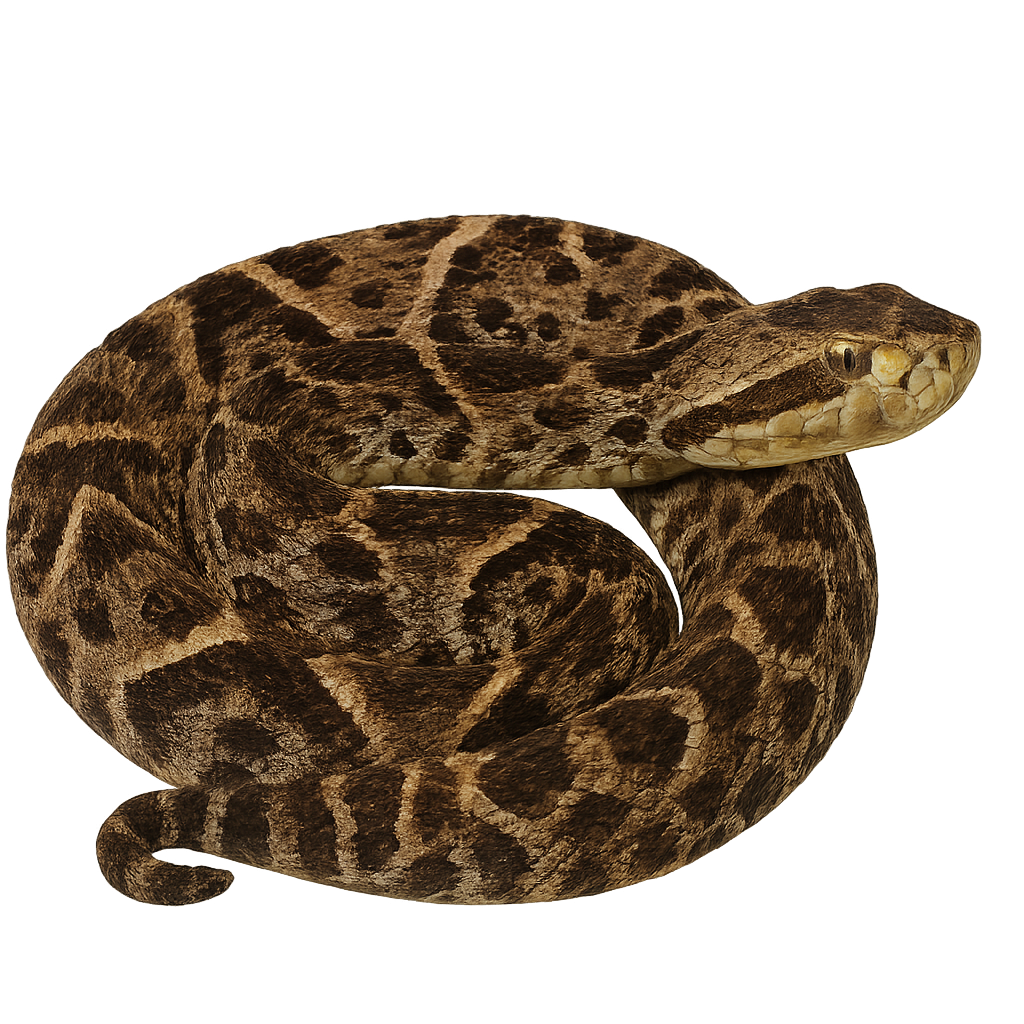Observe and photograph a species in its natural habitat
Learn where and when to observe a species in the wild, how to recognize it in the field, and what habitats it lives in. Get photography tips adapted to its behavior and capture stunning images without disturbing the animal. For full details, open the complete profile in the WildlifePhotographer app.
Fer-de-lance
Scientific name: Bothrops asper

IUCN Status: Least Concern
Family: VIPERIDAE
Group: Birds
Shyness: Shy
Safe distance: 5 m
Breeding season / Courtship: 01.10-31.12
Gestation: 6 à 7 mois
Births: 01.04-31.05
Habitat:
Humid and dry tropical forests, woodlands, and grasslands of Central and South America, mainly from Mexico to Panama, Colombia, and Costa Rica
Description:
The Fer-de-lance is a venomous viper found primarily in the rainforests of Central and South America. It is a medium to large snake, typically measuring between 1.5 and 2.5 meters in length, although some individuals can reach up to 3 meters. Its body is robust, and its color ranges from brown, gray, to olive, with diamond-shaped patterns along its back, which helps it blend into its environment. Its head is triangular and distinct from the body, with characteristic scales that give it a "spearhead" appearance. This snake is primarily terrestrial and often hides under leaves or in underbrush to hunt or rest. The Fer-de-lance is an opportunistic predator, feeding mainly on small mammals, birds, and frogs. Its venom is extremely potent and can cause severe injury or death if antivenom is not administered quickly. It usually strikes by surprise, launching itself at its prey or an intruder. While it is an important predator in its ecosystem, it faces threats related to deforestation and habitat loss.
Recommended lens:
>=100 mm
Photography tips:
Use a telephoto lens to photograph the fer-de-lance from a safe distance, especially when it is resting or moving slowly across forest floors or leaf litter.
Opt for soft morning or evening light to capture the textured details of its robust body, distinctive scales, and camouflage pattern blending into the undergrowth.
Exercise extreme caution: the fer-de-lance is a venomous snake, known for being both elusive and capable of delivering a defensive strike if threatened. Never attempt to get too close.
Always respect its space and observe without interfering with its natural behavior. Avoid sudden movements and maintain a safe distance to protect both yourself and the animal.
The Fer-de-lance (Bothrops asper or Bothrops atrox depending on the region) plays a vital role in forest ecosystems. Though feared, it deserves respectful observation and zero disturbance, in line with responsible wildlife photography ethics.
Ready to take action?
Choose your platform and start your free trial today



